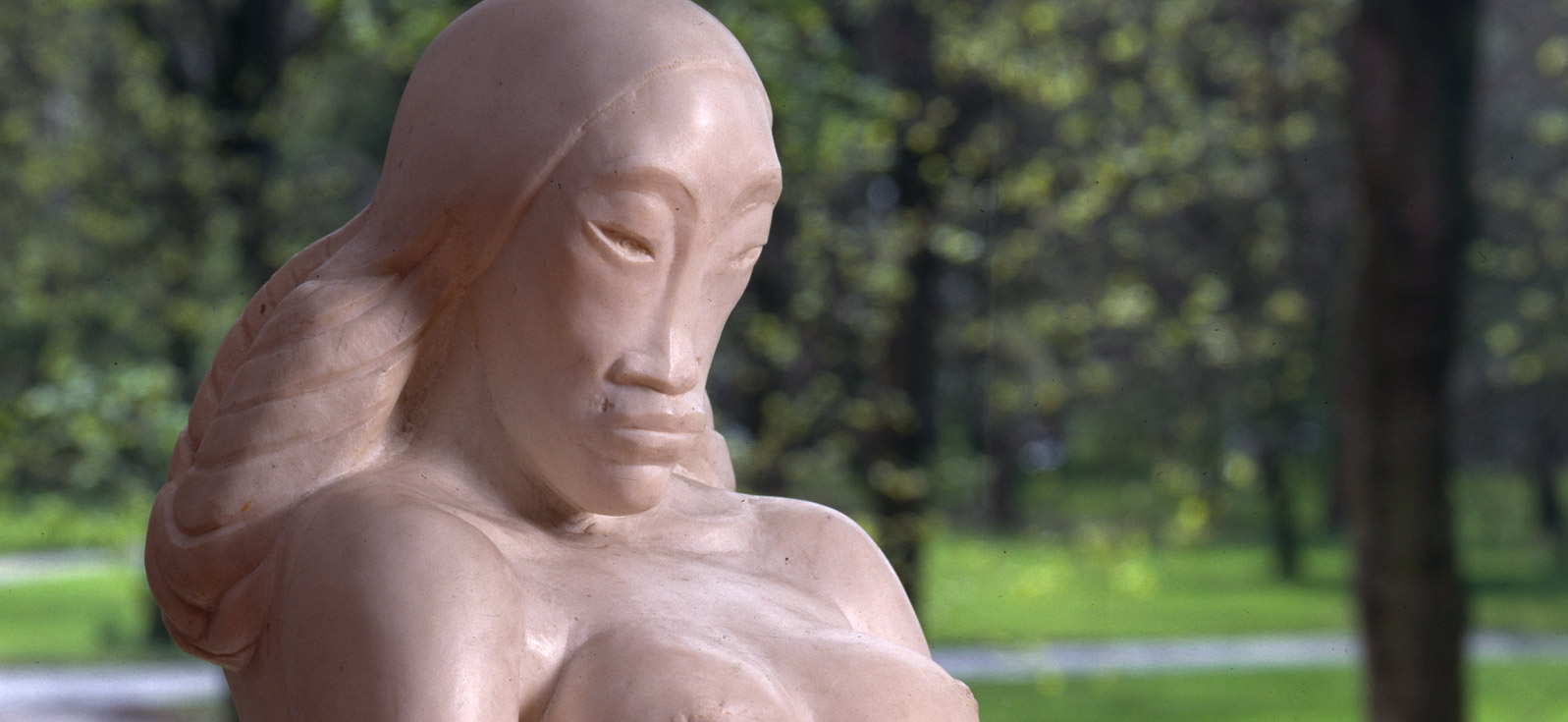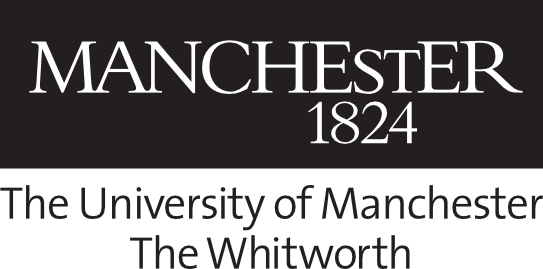
Sculpture
A walk through the wildlife and the art life of the Whitworth Park
We begin our walk at the park entrance to the Whitworth, where two new glass wings enclose an art garden. Designed by the Chelsea gold medallist, Sarah Price (who co-designed the 2012 Olympic Park meadows), the grasses and perennial plants are bordered by an evergreen, cloud-like box hedge. Their rolling shapes form a backdrop to Nico Vascellari’s Bus de la Lum (4). Its elemental, bronze form takes its inspiration from a forest near the Italian artist’s childhood home, a place of local folklore.
Look up: sitting high up over the park entrance is Nathan Coley’s Gathering of Strangers (3), its coloured lights both a definition of and a suggestion for the Whitworth’s new outdoor spaces. In the sky, too, you might glimpse the sparrowhawks and kestrels that often fly over the park.
Close by, just in front of the wing that contains the landscape gallery, is a mature paperbark maple, a tree whose shiny, orange-brown bark peels off in thin, paper-like layers. Glance to your left and you’ll catch a glimpse of Simon Periton’s The Outsider / The Insider (1). These sculptural bronze gates form an apt, artistic gateway into the park.
Leave both trees and art behind for a moment now, as we take look at another garden created by Sarah Price: The Alex Bernstein Garden. Sheltered by an original brick wall on one side and the study centre on the other, you’ll need to go into the gallery and almost immediately back out (via glass doors just past the lift) to get to it.
It’s worth the detour: this quiet, contemplative space will, in summer, be filled with wildflowers. Planted as part of the gallery’s efforts to increase local biodiversity, it is the park’s insect inhabitants – speckled wood butterflies, which fly in sunny patches beneath the trees, red admiral, small tortoiseshell and painted lady butterflies – who will benefit from their blooms. They will also support the half dozen-strong species of bumblebee that live in the park (and in the gallery’s new hives), and the honeybees that fly in from colonies on nearby rooftops, such as at Manchester Museum.
The garden is home to Emily Young’s Maremma Warrior Head V (2) – a sculpture whose ancient quartzite material is a reminder of the passing of time – and examples of the brickwork created for the gallery by MUMA. The bespoke “Whitworth” brick reflects the original red bricks of the Edwardian building, their patterning in turn inspired by the slashed effect of one of the gallery’s historic textiles. The white glazed faience bricks, meanwhile, have been made by Shaws of Darwen, just as they have been since the Industrial Revolution.
We’ll walk towards the centre of the park now, until we reach The Whitworth Park Obelisk (9). Created by Cyprien Galliard in 2011, the obelisk is made from the crushed brick and concrete of demolished housing in nearby Moss Side and Hulme. Standing here, away from the traffic, it’s easy to see how the park acts as a green island amidst the urban sprawl. It is a home to fifteen species of breeding birds, among them great and blue tits, nuthatches and great spotted woodpeckers (which breed in holes in older trees; listen out for their hard “chack”).
Wood pigeons and collared doves also call the park home. Listen for the rattling call of the mistle thrush, or for blackbirds, song thrushes, dunnocks, long-tailed tits and robins. In winter you’ll see the straggly remains of nests built in the trees by magpies, or the resident pair of carrion crows.
We turn now towards Moss Lane East to find Gustav Metzger’s Flailing Trees (10), created by plunging 21 upended willow trees into a bed of concrete. The denuded trees, reduced to a wild arrangement of roots, are Metzger’s protest at human brutality against nature. Nearby, meanwhile, sits Nate Lowman’s monumental bronze (and thus everlasting) Snowman (11). Both are surrounded by rough, uncut grass and wood that has been allowed to rot, creating homes and sources of food for beetles, bees and other insects – and for the animals that feed on them, such as the park’s wood mice and grey squirrels, or the bats and foxes that hunt at night.
A path leads away towards Michael Lyons’s Phalanx (8), a steel sculpture that regular visitors may remember: purchased by the Whitworth in 1978, it has been on display outside the gallery since the mid-1990s. Now, as you head back toward the gallery, you’ll see the 126 year-old plane trees reflected in the mirrored mullions that support the Whitworth’s café - sit inside in poor weather, looking out through its floor-to-ceiling windows. In winter you might spot some of the park’s rarer inhabitants: while goldfinches and greenfinches hop through the trees, on occasion you might also spy green ring-necked parakeets, slim birds flying high among the trees, fieldfares and redwings (both thrushes from Iceland and Scandinavia) or the distinctive waxwing, visiting from Europe to feed on berries.
But we’re not inside yet, and in the park now you’ll discover Christine Borland’s Hippocratic Tree (7), a sculpture inspired by the ancient tree under which Hippocrates instructed his students, and Jacqueline Donachie’s Crawfurd Heights (6). Named after a block of flats on a Glasgow estate, and constructed from industrial aluminium tubing, it brings an element of urban living into what is, after all, an urban park.
As we walk back to the gallery, you’ll find the bold, red-painted steel forms that are Bernard Schottlander’s Terminal and Untitled (5). Sitting to one side of the Edwardian portico, they mark the Whitworth’s original entrance and are a reminder of how things – and people - can change: the artist began his working life as a welder before turning to art, while the Whitworth, of course, is no longer the red brick institution of old.
And that brings us to the end – but while our walk may be done there’s much more you can do, indoors and out. At the gallery with your children? Pick up a free Welly Walks map from our information desks, or keep an eye out for our messy play sessions and events created by our Cultural Park Keeper. Or, if you love the park, why not join the Friends of Whitworth Park? Find out more at friendsofwhitworthpark.org.uk.
The Whitworth’s outdoor artworks have only been made possible via the generous donation of works from The Karpidas Foundation and with funding from Arts Council England.
Find out more about our eco credentials in our Going Green section and why not join our mailing list to be first in line as we release more information.

